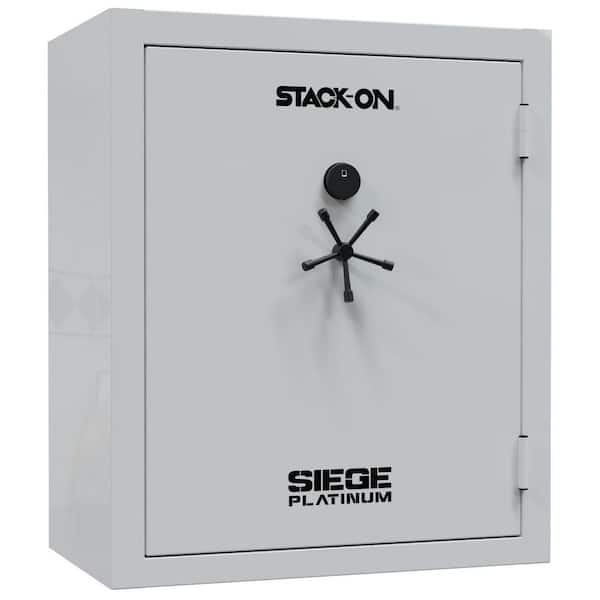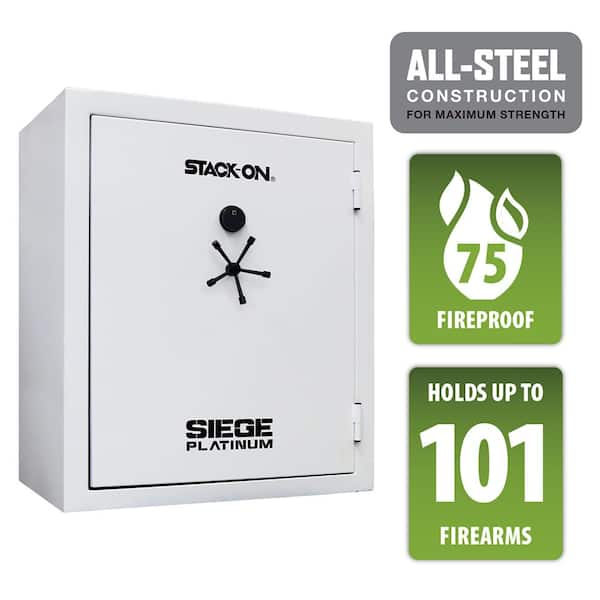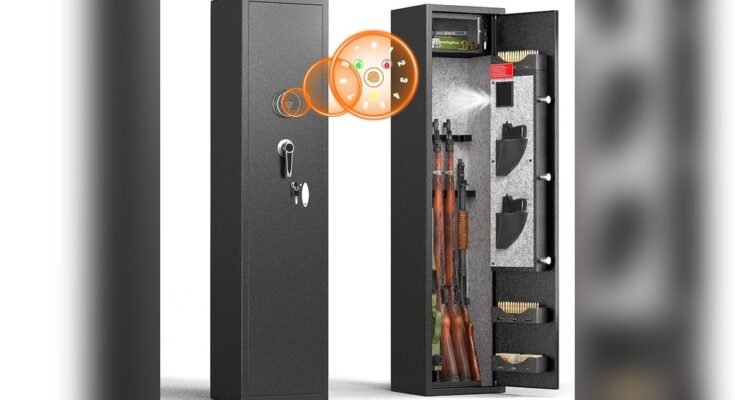Are you worried that your biometric rifle safe might fail when the temperature drops? Cold weather can be tough on electronics, and your safety gear is no exception.
You need to trust that your rifle safe will open quickly and securely, no matter how icy it gets outside. You’ll discover how biometric safes perform in freezing conditions and what you can do to keep your firearms protected and accessible when it matters most.
Keep reading to find out if these high-tech safes are truly reliable in the cold.
How Biometric Safes Operate
Biometric rifle safes use unique technology to secure firearms with fingerprint recognition. These safes scan and match fingerprints to allow quick access. The system depends on sensitive electronic parts to read and verify fingerprints. Understanding how these safes work helps to know their reliability in cold weather.
Fingerprint Sensor Technology
Fingerprint sensors capture the ridges and patterns on a finger. They use optical, capacitive, or ultrasonic methods to do this. Optical sensors take a photo of the fingerprint. Capacitive sensors measure electrical signals from the skin. Ultrasonic sensors use sound waves to map the fingerprint in detail. The safe compares the scanned print to stored fingerprints. Access is granted only if there is a match.
Cold weather can affect the skin’s moisture and texture. Dry or cold fingers may reduce sensor accuracy. Some safes include heaters or moisture sensors to improve reading. Quality sensors adapt better to these changes. This helps keep the safe functional in low temperatures.
Power Sources And Electronics
Biometric safes rely on batteries or external power. Most use AA or rechargeable batteries inside the safe. Power is needed for the fingerprint sensor and the locking mechanism. Cold weather can reduce battery life and performance. Batteries may drain faster in freezing conditions.
Electronics inside the safe include microprocessors that analyze fingerprint data. These components are sensitive to extreme temperatures. Some safes have insulated compartments or temperature controls. This protects the electronics and maintains reliability. Proper power management ensures the safe works well even when cold.
Effects Of Cold On Electronics
Cold weather affects how electronic devices work. Biometric rifle safes rely on electronics to read fingerprints and open quickly. Low temperatures can change how these parts perform. Understanding these effects helps you know what to expect from your safe in winter.
Battery Performance In Low Temperatures
Batteries lose power faster in cold weather. The chemicals inside slow down. This means your biometric safe might respond slower or not work at all. Keep spare batteries inside the house to avoid surprises. Some safes use lithium batteries, which handle cold better.
Sensor Sensitivity Changes
Cold air can make sensors less sensitive. Fingerprint scanners might not read prints clearly. Dry or cold skin also makes scanning harder. The safe may reject correct fingerprints more often. Warming your fingers or the safe helps improve sensor response.
Cold Weather Impact On Fingerprints
Cold weather can affect how well biometric rifle safes read fingerprints. Low temperatures change the skin’s surface and moisture. These changes can make it harder for the safe’s sensor to recognize the fingerprint. Understanding these effects helps users prepare for winter conditions.
Skin Dryness And Sensor Recognition
Cold air often dries out the skin. Dry skin loses the natural oils that help sensors detect fingerprint patterns. This dryness can cause the sensor to miss details. As a result, the safe may not open quickly or at all. Keeping skin moisturized can improve sensor accuracy in cold weather.
Glove Use And Access Challenges
People often wear gloves in cold weather. Gloves block direct contact with the sensor. Most biometric safes require bare fingers to work. Removing gloves takes time and can be inconvenient. Some safes offer keypad or backup key options as alternatives. Planning for these challenges ensures faster access when needed.

Design Features For Cold Climates
Biometric rifle safes must handle cold weather challenges well. Designs for cold climates focus on protecting the safe’s electronics and keeping the locking system reliable. Cold temperatures can affect battery life and sensor accuracy. Proper features help the safe work smoothly in freezing conditions.
Insulation And Weatherproofing
Insulation keeps the safe’s interior temperature stable. Thick walls with foam or other materials block cold air. Weatherproof seals stop moisture and frost from entering. These features protect the biometric scanner from freezing and fogging. A well-insulated safe prevents damage to stored rifles and electronics.
Heating Elements And Temperature Control
Some safes include small heating elements inside. These keep the internal temperature above freezing. Temperature control systems monitor heat levels and turn the heater on or off. This protects batteries and sensors from cold damage. Heating helps the biometric system work fast and accurately in winter.
User Experiences And Field Tests
Biometric rifle safes offer quick access to firearms using fingerprint sensors. Many users want to know if these safes work well in cold weather. Real user experiences and field tests provide valuable insights. They show how these safes perform in freezing temperatures and tough outdoor conditions.
Testing biometric safes in cold weather reveals their strengths and weaknesses. Some safes hold up well, while others face challenges. Understanding these experiences helps buyers choose the right product for cold climates.
Success Stories In Harsh Conditions
Several users report smooth operation of biometric safes in freezing weather. Fingerprint scanners worked quickly even below freezing. Some hunters praised safes that opened easily after snow exposure. Cold mornings did not slow down access to their rifles. These positive reviews suggest some models handle cold well.
Field testers also found certain safes reliable during winter trips. The safes maintained battery life despite low temperatures. Users appreciated quick unlock times after wearing gloves. These success stories highlight that cold weather does not always harm biometric safes.
Common Issues Encountered
Some users experienced problems with fingerprint recognition in cold weather. Dry, cold fingers sometimes failed to trigger the scanner. Moisture from snow or ice caused sensor errors or delayed response. Battery life dropped faster in freezing temperatures for certain models.
Field tests showed some safes became slow or unresponsive after extended cold exposure. In some cases, mechanical parts stiffened, making the door hard to open. These issues suggest not all biometric safes are suited for extreme cold. Buyers should check product specs and user reviews carefully.
Tips For Reliable Use In Cold Weather
Using biometric rifle safes in cold weather needs special care. Cold can affect how well the safe works. Some parts may slow down or stop working. Simple tips help keep your safe reliable and ready.
Keep the safe clean and the battery strong. Make sure the fingerprint scanner reads well, even in cold. These steps make your safe more dependable in low temperatures.
Maintenance And Battery Care
Cold weather can drain batteries faster than usual. Change batteries before winter starts to avoid failure. Use high-quality batteries for longer life. Keep battery contacts clean and dry. Check the safe for dust or dirt that may block sensors. Wipe surfaces gently with a soft cloth. Avoid using harsh chemicals that can damage parts.
Optimizing Fingerprint Scanning
Cold fingers may not scan well on the sensor. Warm your hands before using the safe. Dry your fingers completely to improve reading. Enroll multiple fingerprints for backup access. Position your finger firmly and straight on the scanner. Clean the scanner surface regularly to remove smudges. This helps the safe recognize prints quickly and accurately.
Alternative Security Options
Biometric rifle safes may face challenges in cold weather. Cold temperatures can affect the sensors and battery life. Choosing a safe that works well in any climate is important. Alternative security options offer reliable protection without tech issues. These options use simple, proven methods. They work well even in freezing weather.
Mechanical Safes
Mechanical safes use manual dials or levers to open. They do not rely on batteries or electronics. Cold weather does not affect their function. Users turn the dial to enter a code. This makes them very reliable in winter. Mechanical safes often have thick steel walls. They provide strong protection against theft and weather. They require some practice but are easy to use. No worry about sensors freezing or low power.
Traditional Locking Systems
Traditional locks include key locks and combination locks. These locks have been used for many years. They do not depend on electricity or sensors. Keys or combination codes open the safe. Cold weather does not stop these locks from working. They are simple and strong security options. Many rifle owners trust traditional locks for safety. These systems are easy to maintain and use. No risk of freezing or battery failure in cold.


Frequently Asked Questions
Do Biometric Rifle Safes Work Well In Cold Weather?
Yes, most biometric rifle safes function properly in cold weather. However, extremely low temperatures may slow sensor response. Choose safes with cold-resistant technology for reliable access.
How Does Cold Weather Affect Fingerprint Sensors?
Cold weather can cause dry or numb fingers, reducing sensor accuracy. Some safes include heating elements or advanced sensors to improve fingerprint recognition in cold conditions.
Can Battery Performance Impact Biometric Safes In Winter?
Yes, cold temperatures can reduce battery life and performance. Use lithium batteries and keep the safe in a moderately insulated area to maintain optimal function.
Are There Special Biometric Safes Designed For Cold Climates?
Yes, some manufacturers offer biometric safes with enhanced cold-weather features. These include temperature-resistant sensors and insulated interiors to ensure consistent operation in freezing temperatures.
Conclusion
Biometric rifle safes can work well in cold weather with proper care. Cold may slow down the fingerprint sensor but does not stop it. Keeping batteries warm helps maintain safe function. Regular cleaning of the scanner improves accuracy. Choose safes designed for tough weather for best results.
Remember, no safe is perfect in extreme cold. Testing your safe before winter is a smart idea. This helps avoid surprises when you need it most. Trust your safe but prepare for the cold. Safety and readiness go hand in hand.
